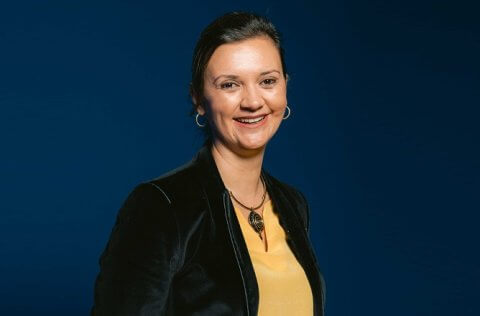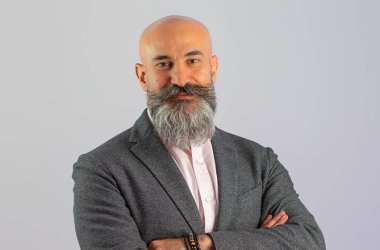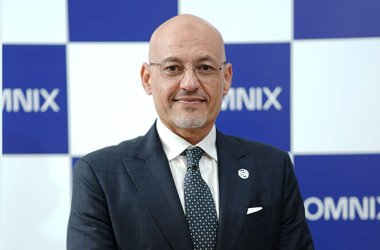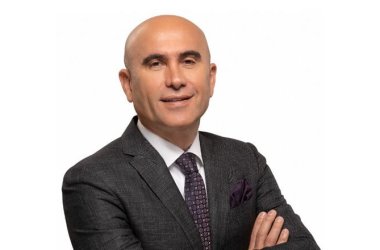CNME Editor Mark Forker spoke to Majda Lahlo, Vice President of Ericsson, and President of Ericsson West Africa and Morocco, during GITEX Africa, in a bid to get a better understanding of how the Swedish ICT vendor is hoping to unleash the potential of differentiated connectivity to address the digital divide that exists across the African continent.

Majda Lahlo has spent her entire professional career working for Ericsson across the African marketplace, so there are few better placed to comment on both the progress that has been made, and what still needs to be done to provide internet access to the 40% of the African population that remain disconnected.
CNME spoke to Lahlo during GITEX Africa, which is now in its 3rd edition, and it’s the first time Ericsson has exhibited at the tech conference.
She kickstarted the conversation by highlighting how the event provided them with the opportunity to reinforce their ‘Africa in Motion’ strategy.
“Our presence here at the event is very important to us, and we want to demonstrate our unwavering commitment to the continent. By being here at GITEX Africa, it allows us to reinforce our Africa in Motion strategy that we launched a few years ago, where we can show how we can leverage on the power of differentiated connectivity to unleash the potential for both consumers, customers, CSPs, and developers. The key message that we really want to project at GITEX Africa, is that what’s next for Africa starts now. Ericsson is ready to enable the power of 5G across Africa, and we are bringing the innovations and technologies that we believe can unleash the potential of differentiated connectivity,” said Lahlo.
Lahlo used the agricultural industry as an example of where huge progress has been made thanks to the implementation of cutting-edge technologies, which have dramatically increased productivity and efficiency.
“If you look at the agricultural sector, which is a very important industry across the continent of Africa. It’s not that long ago that a farmer would rise in the morning and perform his daily tasks based solely on his own instincts and experience. Today, thanks to the power of 5G connectivity he has access to fixed wireless technology, and that allows him to have secure access to check weather forecasting through AI-powered applications, monitor crop prices in the marketplace, or apply for a micro loan through our mobile platform. There are so many new opportunities for farmers to tap into, and with access to the collective power of 5G, combined with AI and cloud computing, it has fostered an ecosystem that is empowering farmers to be work more effectively and efficiently,” said Lahlo.
Again, in terms of the messaging at the event from Ericsson, Lahlo outlined how they wanted to demonstrate their capabilities from a B2B, B2C, and B2D perspective, highlighting the role played by their new joint-venture Aduna.
“At the stand here at Ericsson, we are approaching all of our messaging across three different dimensions. The first is, what it brings to B2B, what it brings to B2C, and finally what does it bring to B2D. The B2D element is designed to expose the capabilities of the network to developers, who usually outsmart us by finding new use-cases and applications that respond to the needs of the consumers and enterprises. We are doing this through our newly-formed joint venture Aduna, which is backed by 16 global CSPs, and we are committed to continuing to collaborate in this sphere to create a platform for development that enables the aggregation of all the APIs, to apply it in any network anywhere. This gives users the ability to scale-up, and bring applications that can be deployed everywhere in the continent,” said Lahlo.
Ericsson has been connecting Africa for over 100 years, and has played a critical role in building wireless networks. However, as Lahlo pointed out, Ericsson along with its ecosystem of partners need to find a way to make devices more affordable in order to bridge that ‘digital divide’.
“At Ericsson, we have a long history of driving Africa’s telecommunications evolution. Our promise, and commitment to Africa is always to support a world in which digitalisation is transforming the ecosystem. However, for this to happen, then you need to have the right connectivity in place, and the right 4G network to start with, and we are now seeing the emergence of 5G. Our commitment is to make sure that we will continue to play a role in expanding 4G coverage. We have seen a huge increase from 7% in 2020, to 34% by 2024 in the data traffic across the continent. That being said, we can still see that there is a gap in the usage versus the coverage that we are offering. In order for us to bridge that gap, then we need to continue to collaborate with the entire ecosystem across the Africa continent because we need to find a way in which we can make devices more affordable for consumers,” said Lahlo.
Lahlo acknowledged that in order to really address the connectivity divide, then more works needs to be done to expand connectivity beyond urban areas and into rural parts of Africa.
“We really need to work on how we bring connectivity beyond the urban areas to the remote rural areas in Africa. We want to bring rural solutions that are cost-effective, in order to give remote area decent broadband coverage. At the same time with the emergence of 5G, we have the possibility to leverage the fixed wireless access capabilities to offer fibre-like experiences to small enterprises and agricultural businesses in rural areas. In summary, by continuing to collaborate with the many different players across the ecosystem, we can continue to advance the usage of the 4G network, and to support greater use-cases around 5G as it continues to grow across the continent,” said Lahlo.
Lahlo conceded that in relation to the digital divide the numbers are stark, highlighting how both the cost of devices and limited infrastructure make it a challenge that isn’t going to disappear overnight.
“If you look at the numbers, you can see that less that 40% of the African population currently uses the internet, and the main barrier in terms of internet access is the high cost of devices, geographical disparities, limited infrastructure, and the lack of electricity in rural areas. Urban areas across Africa continue to exhibit higher adoption of digital technologies, whilst rural communities are left lagging behind. This is inevitably creating one of the biggest digital divides in the world, and it is a huge problem, as it is preventing underserved communities from accessing meaningful economic opportunities. In terms of what we at Ericsson are trying to do, in order to bridge that gap is from a perspective of developing solutions that are specifically-designed for rural areas. We believe that we can offer very good broadband access to remote communities, and on top of that we leverage on the fixed wireless access based on 5G, which is an affordable way to access broadband compared to what fibre would deliver,” said Lahlo.
However, Lahlo did cite figures from their Ericsson Mobility Report, which indicated that Africa is very much moving in the right direction.
“If you take our Ericsson Mobility Report, which we published back in November 2024, we predicted that 5G subscriptions will make up to 33% of total mobile subscriptions in Sub-Saharan Africa by 2030, and that means that despite the disparity that exists, we will see continued growth in mobile broadband, and with the emergence of 5G, we will see more use-cases that could enable a more inclusive society across Africa. We believe that 5G-based fixed wireless access and rural solutions are just a few examples of the multiple ways that Ericsson are looking to bridge the digital divide that exists across the African continent. However, as I said earlier, we can’t do this alone, you need to cultivate the right partnerships and collaborations to really advance change with the key stakeholders from across the entire ecosystem,” said Lahlo.
Lahlo concluded a brilliant conversation by highlighting the unique capabilities of their ‘future-ready’ networks.
“When we talk about future-ready networks, first of all, we need to think about it as an end-to-end connectivity that offers differentiated experiences based on the need. I want to really underline the importance of a differentiated connectivity. When we conducted our consumer lab survey, we saw that 35% of the users acknowledge that 5G offers better experiences than 4G, but many of those users are no longer satisfied with standard performance, they are looking for a more advanced experience and are willing to pay for it. Essentially, differentiated connectivity is at the core of what we call future-ready networks, and the first step is to have the right 5G coverage. Another aspect of future-ready networks is the programmability factor that steers network behaviour towards specific business outcomes, and this will also gear us towards autonomous networks, which is a true gamechanger, as it will bring a fundamental shift in the business paradigm,” said Lahlo.





